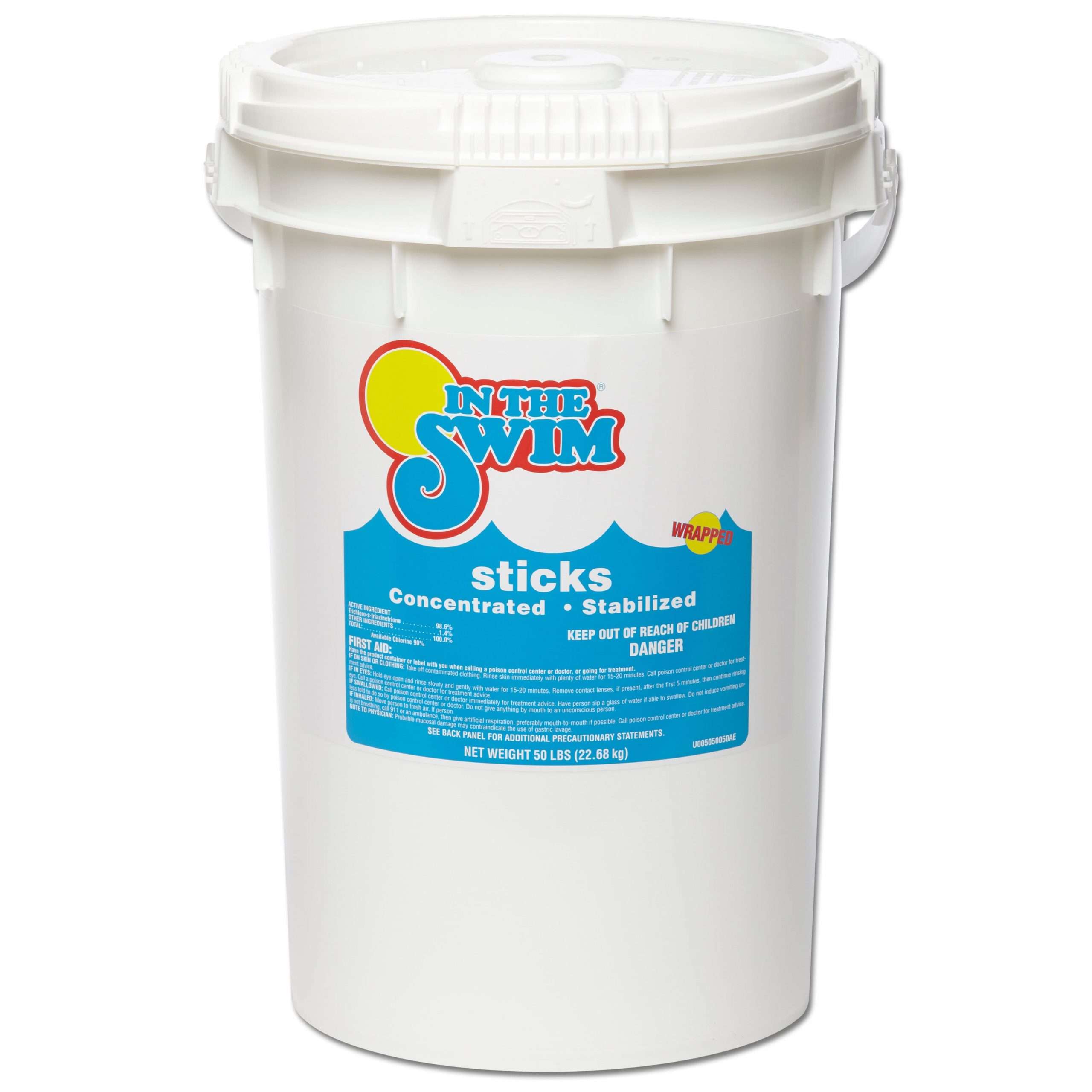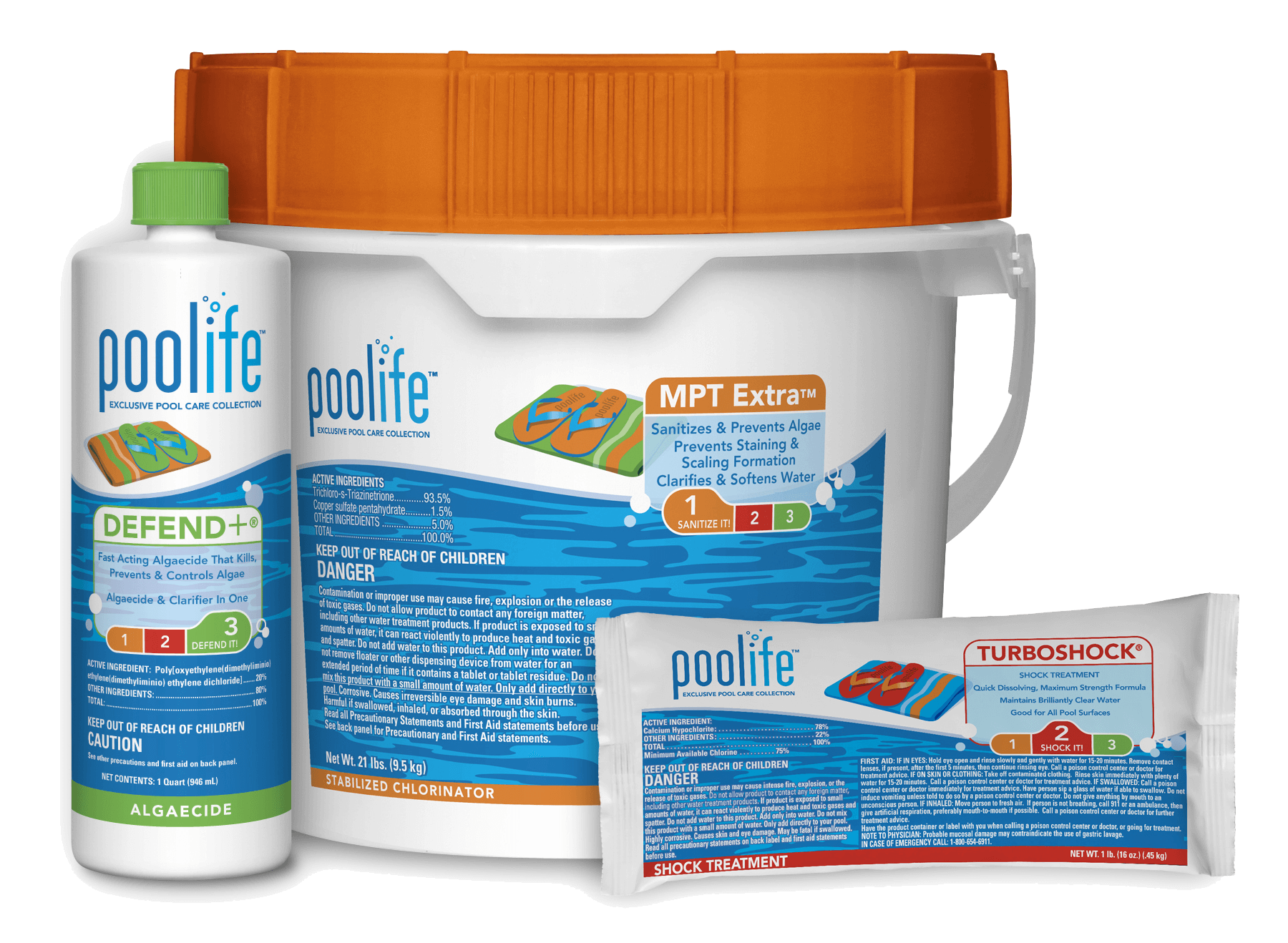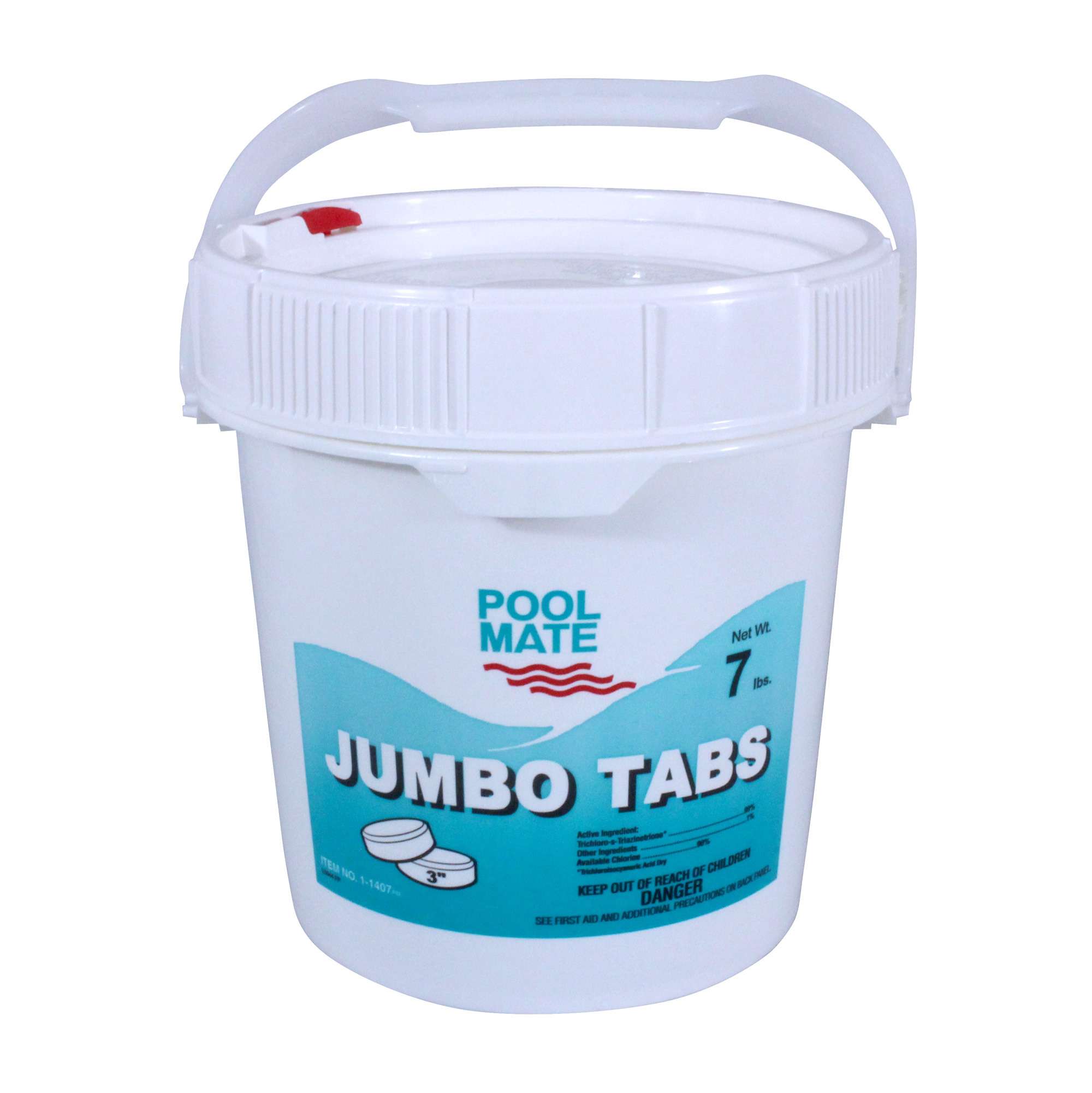What Does Cyanuric Acid Do
Cyanuric Acids primary function is to protect chlorine from the sun often called the chlorine stabilizer. It acts as sunscreen for your chlorine. The UV radiation that passes through the water and into your pool evaporates the chlorine in your water, causing rapid breakdown. With the right amount of Cyanuric Acid in your pool, this process is slowed down, and chlorine can do its job better.
The more Cyanuric Acid in your pool, the longer it takes for chlorine to dissipate. At least 30 ppm of CYA should be maintained in highly chlorinated pools, while lower-chlorinated pools may get by less. The exception to this rule is if you have a saltwater pool or an SWG, you want no CYA because it inhibits the efficiency of your equipment.
Cyanuric Acid also prevents damage from free radicals when chlorine oxidizes contaminants in your water, including sweat, urine, and other organic materials.
Simply put: without CYA, these contaminants would oxidize your chlorine very quickly, rendering it useless.
In addition to keeping your chlorine from disappearing at record speed, Cyanuric Acid also prevents damage from free radicals, which cause scale and etching marks in plaster or vinyl liners. This is why a high level of CYA is important in pools with painted surfaces.
Test Your Water Regularly
Testing your water should be done at least once a week. This is because the pH level is extremely delicate and a drop or spike can easily occur when someone goes in the pool, when it rains, even when the outside temperature changes!
There are 3 types of kits you can use to test for pH test strips, liquid kits, and digital kits. All are easy to use and will return easy to read levels when testing water samples.
Why Is My Pool Cloudy When The Chemicals Are Balanced
When all the pool chemicals are fine but your water is still cloudy, there is a good chance that you have particles in your pool. In this case, a water clarifier is used to collect all the fine particles so that they can be picked up by the filter.
Alternatively, you can use pool floc , also known as a super floc, which is a chemical that is used to bring all the clouding particles to the bottom of your pool forming a large cloud that you can then vacuum up using a manual pump. The particles collected using a pool floc will not pass through the filter like they would if a water clarifier were used. Make sure that your filter is set on the backwash or waste option when you are vacuuming to avoid any damage that may happen to the filter as a result of clogging.
Also Check: How To Get Stabilizer Up In Pool
Take Final Water Test 48 Hours Later
After two days and two nights of keeping a close watch over the process, I took the reading in the morning. Total alkalinity in my example read 101 ppmânot bad at all. The pH was stable at 7.4. Remember that even if the natural aeration process is not complete, pH levels will not likely rise above the recommended levels because the alkalinity is within range and no pH increaser was used in this process.
Dilute Muriatic Acid As Directed And Add It To The Water

The pool in my example holds 20,000 gallons. To get my target value of 100 ppm, I needed to add about 2 quarts of muriatic acid.
I usually distribute the muriatic acid solution slowly around the pool while the pump is running high to increase the effect.
Some pool managers prefer adding the muriatic acid solution in one spot. Personally, I don’t like to do this because acid can damage pool parts when it is concentrated in one region.
The natural process of aeration begins after you add the muriatic acid and the levels of pH and TA have fallen and settled. During the aeration process, the levels of pH alone will rise gradually until it reaches the recommended level.
Read Also: Dolphin Nautilus Cc Plus Troubleshooting
How The Aeration Process Works
Common Problems With Pool Ph And Total Alkalinity
Now that you have a basic understanding of how Total Alkalinity and pH work together, lets take a closer look at how to resolve specific balance issues in your pool. Weve said it before, but well say it again when making any adjustments to your waters chemistry, ALWAYS read and follow product label instructions, and only add balancing chemicals to the pool if the pump is running. Start with an accurate pool water test to ensure youre dosing the pool correctly. And remember: its far better to make small, gradual adjustments than it is to make large changes. Keep on top of pool water chemistry with regular testing 2-3 times per week.
Recommended Reading: Aria Las Vegas Pool Cabanas
Low Calcium Levels In The Pool
Calcium on the low and high end of the scales will eventually cause problems and when they do, be ready for some serious problems. Low calcium, as is often the case, will cause long-term serious damage especially to plaster, vinyl liners, grout in between tiles, metal rails, and even concrete decking around the pool. Heres why it happens. Plain old water, believe it or not, is very aggressive. By that I mean that water seeks to dissolve and bring into solution minerals, metals and other substances. Although soft water is desirable in everyday home use, calcium hardness is necessary in pool water. With sufficient levels of calcium dissolved, the aggressive nature of water is tamed and will help prevent the leaching out of certain substances in pool equipment. Low calcium levels in a plaster pool will cause the water to draw calcium directly from the plaster, causing it to pit, become rough, and eventually crumble. If youre faced with a re-plastering job on your pool youll realize that this is a HUGE expense and a very big hassle. Low calcium also contributes to vinyl pool liners losing their elasticity and supple nature. In short, its a great way to shorten the life of your liner!! Metals will corrode slowly, and you can multiply this effect even more if you let the pH of you pool plummet and stay low for long periods of time. This is starting to sound like the car needing the oil change, huh?
You Recently Shocked Your Pool
Shocking your swimming pool refers to the process of adding chemicals usually chlorine to stabilize the pH level.
Shocking breaks up combined chlorine killing algae, bacteria, and other pathogens and it rapidly increases your chlorine level.
Combined chlorine is essentially chlorine thats bound to ammonia and nitrogen. Translation: its an ineffective sanitizer when in this state.
Adding shock breaks up the combined chlorine and creates an increase in free chlorine. This increase can spike your pools pH level.
Pool shock is available in both chlorinated or non-chlorinated versions. If your pool already has a high pH level, using chlorinated shock will only make things worse.
Recommended Reading: Average Cost Of Salt Water Pool
Effects Of A High Ph Level
Why is high water pH level, or pH above 7.8, bad for your swimming pool? For starters, its unhealthy for both the swimmers and your wallet. Here are some of the problems you might have to deal with:
- Youll hear complaints about stinging eyes, dry skin, and sticky feeling from the swimmers.
- Youll notice that the pool has become hazy or cloudy which isnt very appealing to those who want to swim.
- Chlorine becomes less effective at higher pH levels. The cost of adding more chlorine is more expensive than test kits for pH. Low chlorine promotes bacteria and algae growth.
- Alkalinity makes the water hard and can cause scale formation from calcium deposits. Scale buildup will clog your filters and pipes. This will put a strain on your pool equipment and cause various problems such as leaks and motor failure.
Pool Ph Is Always High
The most common reason for a consistently high pH level in pools is the use of liquid chlorine or a saltwater system as the primary sanitizer. Sodium hydroxide is produced, which has a pH of around 13. New pool plaster or pebble finishes will also raise pH in pools for about a year after installation. If your pool has water features, such as a waterfall or fountain, these will also raise pH levels in your pool .
Recommended Reading: Pristine Blue Pool Chemicals Reviews
How To Balance The Ph In Your Pool
To lower pH, you need to use a pH reducer , such as muriatic acid or sulfuric acid. Anything below a pH of 7.0 is too low, and apart from turning water cloudy, this environment brings about harmful bacteria causing ammonia and algae.
To increase low pH levels, you need to use a pH Increaser with soda ash.
Clorox Pool & Spa Small Pool 1 Chlorinating Tablets

Clorox Pool Chemical will help you clear out bacteria efficiently so you wont have to worry about the growth of algae in your pool. This pool chemical is used for pools with 5,000 gallons of water capacity.
It is an outstanding product that works just like other commercial pool chlorine without having issues about your safety.
Also Check: Can I Leave My Dolphin Pool Cleaner In The Pool
Testing Your Pool Water
Testing your swimming pool water regularly is incredibly important to maintaining a clean and safe pool. Like I mentioned above, you can pick up a testing kit and test your pool water every week or so to see if you need to make any adjustments. If you dont have a good testing kit, head over to my recommendations for the best pool water testing kits. I also walk through how to test your pool water in a separate article as well.
The Orderly Addition Of Chemicals
Chemicals that affect the levels of pH and alkalinity need to be added to the swimming pool first. Getting the pH and total alkalinity sorted out will allow for the addition of further chemicals that affect the hardness and cleanliness of the water. If you find your pH and total alkalinity levels are too low, youll need to add pH increaser to bump up the pH. If both the pH and total alkalinity levels are too high, youll need to add pH reducer. Once you get your pH levels between 7.2 and 7.5 and your total alkalinity between 60 and 120 ppm you can move on to working on the calcium hardness and chlorine levels.
Now that you know how to maintain your pool with water chemicals, to learn more about custom pool options.
Recommended Reading: Metal Sequestering Agent For Pools
How Much Pool Shock Is Needed To Open A Pool
SPP spring pool chemical kits include up to 4 lbs of Calcium Hypochlorite pool shock, but you may need more. In a clear and clean pool, the standard pool shock treatment of 1 lb. per 10,000 gallons is usually sufficient. For pools with visible algae or debris, additional pool shock is recommended, keep adding until the water turns a blue-gray color, without any green hue or tint.
- Blue and Clear – 1 lb per 10,000 gal.
- Blue and Cloudy – 1 lb per 8,000 gal.
- Light Green w/ 36″ visibility – 1 lb per 6,000 gal.
- Med. Green w/ 24″ visibility – 1 lb per 4,000 gal.
- Dark Green w/ 12″ visibility – 1 lb per 2,000 gal.
- Very Dark Green w/ no visibility – Drain & Refill
pH levels strongly affect the power of pool shock. At pH levels of 8.2 – 80% of your chlorine killing power is suppressed. Before shocking a pool, adjust pH level to around 7.2, for greatest effect. Also check that your cyanuric acid level is at least 30 ppm before shocking, to protect it from the sun.
Dirty swimming pools filled with leaves, sticks, frogs etc. any organic matter also consumes your chlorine shock, and can stain pool surfaces. If possible, clean the pool to remove large debris before shocking a pool.
The Importance Of Balanced Pool Water
Balanced pool water is clean, safe, healthy, and comfortable to swim in. And it will prevent damage to your pools structure and equipment.
Too much chlorine will cause skin and eye irritation, and potential illness, while too little will not be effective at killing bacteria, algae, and other contaminants.
If pH levels are too high, the water will become cloudy and create scale deposits on your pool walls and equipment. And if the pH levels are too low, the pool surfaces and equipment will become etched and corroded.
Simply put, unbalanced water can lead to plenty of unwanted issues with your pool. So do yourself and your pool a favour and keep your water balanced.
Recommended Reading: Calcium Dust In Pool
Test The Pool Water’s Alkalinity And Ph After 6 Hours
You will be watching for the changes in pH and alkalinity levels by doing a test after every 6 hours until it reaches the right range. If pH is within the normal range after adding muriatic acid, then you are done.
Taking the reading after six hours is just to help you know whether you are making any improvements in lowering the TA and pH. Amazingly, when I tested the water six hours later, total alkalinity read around 205 ppm and pH was at 7.6 . Your numbers may be different, but you should see a similar reduction in your process too.
Remove Foreign Particles Scrub And Vacuum The Pool
The environment and weather may also be the cause of cloudy water. To fix and prevent cloudy water, follow all of the best practices below.
- Foreign particles, small and large, may find their way into the water, especially during spring. Body oil and sunscreen from swimmers also washes off in the water and accumulates in the pool, causing cloudiness. You can use nets to remove visible particles, and you may have to use pool clarifier to clear up the water when cloudiness persists. Also, I prefer using pool flocculant and vacuuming the pool to do away with fine particles that cannot be removed by leaf net or clarifier.
- Algae also causes cloudiness in its early growth stages. To remove algae, scrub and clean the pool using a large leaf net and vacuum: Then do a pool shock to get rid of any remaining algae. Control the amounts of pH, chlorine, TA, phosphate, and other pool sanitizers to prevent algae growth.
- Free chlorine depletes more quickly in full sunlight, but if trees and buildings are next to your pool, direct sun will be blocked. If your pool is in direct sunlight, consider using a chlorine stabilizer and a pool cover when not using the pool.
- Rain also contributes to cloudy water because it dilutes and therefore reduces free chlorine levels. All you have to do is test the chemicals, paying close attention to the chlorine levels, and adjust them as appropriate.
Read Also: Dolphin Pool Cleaner Turns On But Won T Move
Set A Target Value For Total Alkalinity
In the same example above, I set my target value of TA at 100 ppm. It is important to note that both the levels of TA and pH reduce when acid is added. A target value of 80 ppm or 90 ppm should be just fine, but I anticipated that the levels of pH would drop way below 7.0 when I add a strong acid, so my experience told me that 100 ppm was ideal for raising the level of pH later on through aeration.
Why Is The Pool Cloudy After A Rain

Rain water brings dirt, mud, dust, and other contaminants that contain phosphate, which breeds algae. With the presence of phosphate, the water will start to become cloudy even before the algae begins to grow. If you know a storm or shower is about to come, make sure there is ample chlorine to counter the dilution that rain water will bring, and have the filter running during the rain.
Read Also: Pristine Blue
Winter Chemical Levels For An Easier Spring Opening
The days are shorter, the leaves on the trees are turning colors, and soon those leaves will make a mess of your pool. Thats when you will most likely rush to clean out your pool and cover it for the winter, thus ending your swim season. Time to forget all about the pool, right? Wellno, not really.
Its important to ensure your pool has the correct levels of pool chemicals all winter long. Doing so prevents damage to your pool and certainly makes your pool opening in the spring easier and less expensive. This is especially true in climates that can have dramatic swings in temperatures from late fall, throughout the entire winter and into spring. Not maintaining pH levels will cause any surfaces that touch the pool water to corrode. Try to keep your pools pH levels between 7.2ppm and 7.6ppm all winter long, and keep in mind if your winter pool cover is porous, fresh, untreated water will get into your pool and throw off your pH levels. If your pH falls below 7.2ppm, you should add pH increaser which will correct acidic water conditions, slow the dissipation of pool chlorine and prevent etching of plaster pool walls. If your pools pH level goes above 7.6ppm, reduce it with pH reducer which will help the other pool chemicals work more effectively. A pH reducer is safer, easier and less corrosive than muriatic acid, too.
